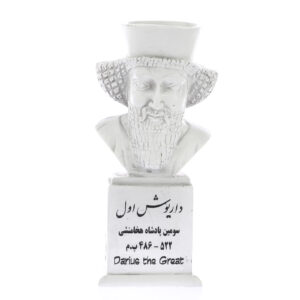Items of Haft Seen
The following are the primary items of Haft-sin, whose Persian names begin with the letter sin in the Persian alphabet.
- Sabzeh (سبزه) – wheat, barley, mung bean, or lentil sprouts grown in a dish.
- Samanu (سمنو) – wheat germ sweet pudding.
- Senjed (سنجد) – Persian olive.
- Serkeh (سرکه) – vinegar.
- Seeb (سیب) – apple.
- Seer (سیر) – garlic.
- Somāq (سماق) – sumac.



Coins (سکه sekke), hyacinth (سنبل sonbol), and clock (ساعت saat) are sometimes included too. Other symbolic items that are typically used to accompany Haft-sin include a mirror, candles, painted eggs, goldfish, and traditional Persian confectioneries.
A “book of wisdom” is also commonly included, which might be the Quran, the Bible, the Avesta, the Shahnameh, or the divān of Hafez.[1]
Symbolic Roots of Haft Seen
The Haft-Seen table represents nature. By tradition, Iranian families take great pains to create the most beautiful Haft-Seen table that they can, for not only does it embody values both traditional and spiritual, it is also appreciated by the visitors during Nowruz visiting exchanges as a reflection of the families’ aesthetic sense and good taste.
Items that start with Persian letter “س”:
- Sabzeh (سبزه): the symbol of rebirth and growth.
- Samanu (سمنو): the symbol of power and strength.
- Senjed (سنجد): the symbol of love.
- Somāq (سماق): the symbol of sunrise.
- Serkeh (سرکه): the symbol of patience.
- Seeb (سیب): the symbol of beauty.
- Seer (سیر): the symbol of health and medicine.
Other items that start with Persian letter “س” that are sometimes included:
- Sonbol (سنبل): the symbol of spring’s arrival.
- Sekkeh (سکه): the symbol of wealth and prosperity.
- Saat (ساعت): the symbol of time.
Items that don’t start with “س” but, nonetheless, are invariably included:
- eggs (تخممرغ رنگی): the symbol of fertility.
- mirror (آینه): the symbol of self-reflection.
- candle (شمع): the symbol of enlightenment.
- goldfish (ماهی قرمز): the symbol of progress.
- book (کتاب): the symbol of wisdom.
A rhyton is a roughly conical container from which fluids were intended to be drunk or to be poured in some ceremony such as libation, or merely at table. They are typically formed in the shape of an animal’s head, and were produced over large areas of ancient Eurasia, especially from Persia to the Balkans
The Rhython – the Greek name means “to flow” – was a drinking cup in the shape of an animal or a mythological creature (e.g., an Amazon or a centaur). It was used during official libation ceremonies and banquets of a more light-hearted nature. We can imagine the drinking games: because a person drinking from a rhyton gradually lifts the object and creates a vacuum in the animal’s head, the liquid is temporarily blocked from leaving the horn, forcing the drinker to lift it even more, until air suddenly fills the vacuum, a chugging sound is heard, liquid is released, and the drinker is soaked with wine.
Popular in Persia, rhytons appear in Athens suddenly and in great quantities in the years after the Persian War and were immediately imitated by artists from other Greek towns. It has been assumed that the Greek soldiers had found the Persian drinking vessels when they looted the enemy camp after the battle of Plataea (479 BCE).
Sometimes, drinking horns without animal head are called rhyton too.
Horn-shaped vessels ending in an animal’s head have a long history in the Near East as well as in Greece and Italy. Early Iranian examples are straight, with the cup and animal head in the same plane. Later, in the Achaemenid period, the head, or animal protome, was often placed at a right angle to the cup, as in this piece. In the manufacture of this gold vessel, several parts were invisibly joined by brazing, which demonstrates superb technical skill. One hundred and thirty-six feet of twisted wire decorate the upper band of the vessel in forty-four even rows, and the roof of the lion’s mouth is raised in tiny ribs. Typical of Achaemenid style, the ferocity of the snarling lion has been tempered and restrained by decorative convention. The lion has a crest running down his back; his mane has the disciplined appearance of a woven material; and his flanks are covered by an ostrich plume. The inclusion of the plume, a departure from convention, suggests that this lion is winged and has some supernatural significance.











 Candle Holder
Candle Holder Coasters
Coasters Jewelry Box
Jewelry Box


























Reviews
There are no reviews yet.